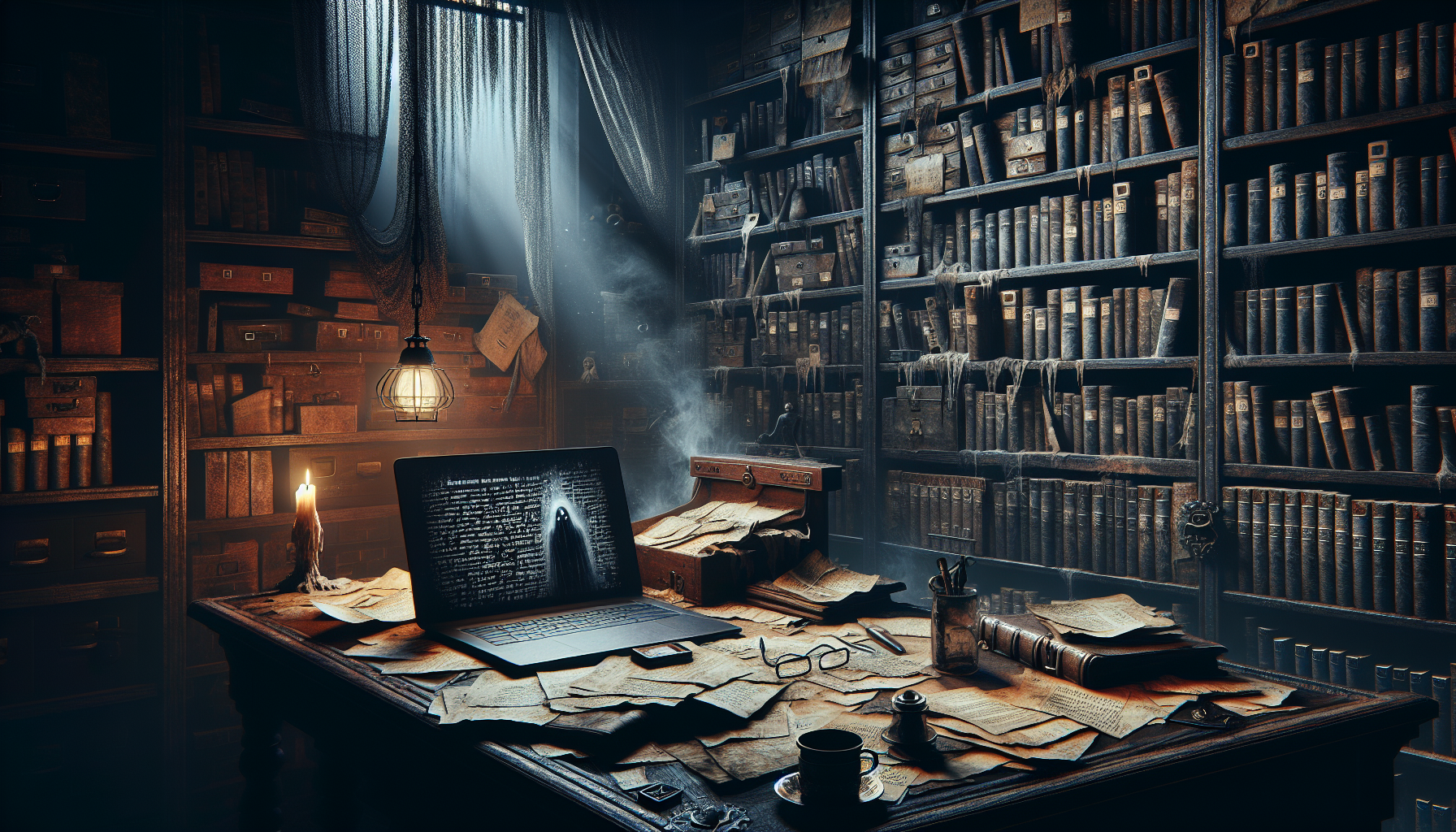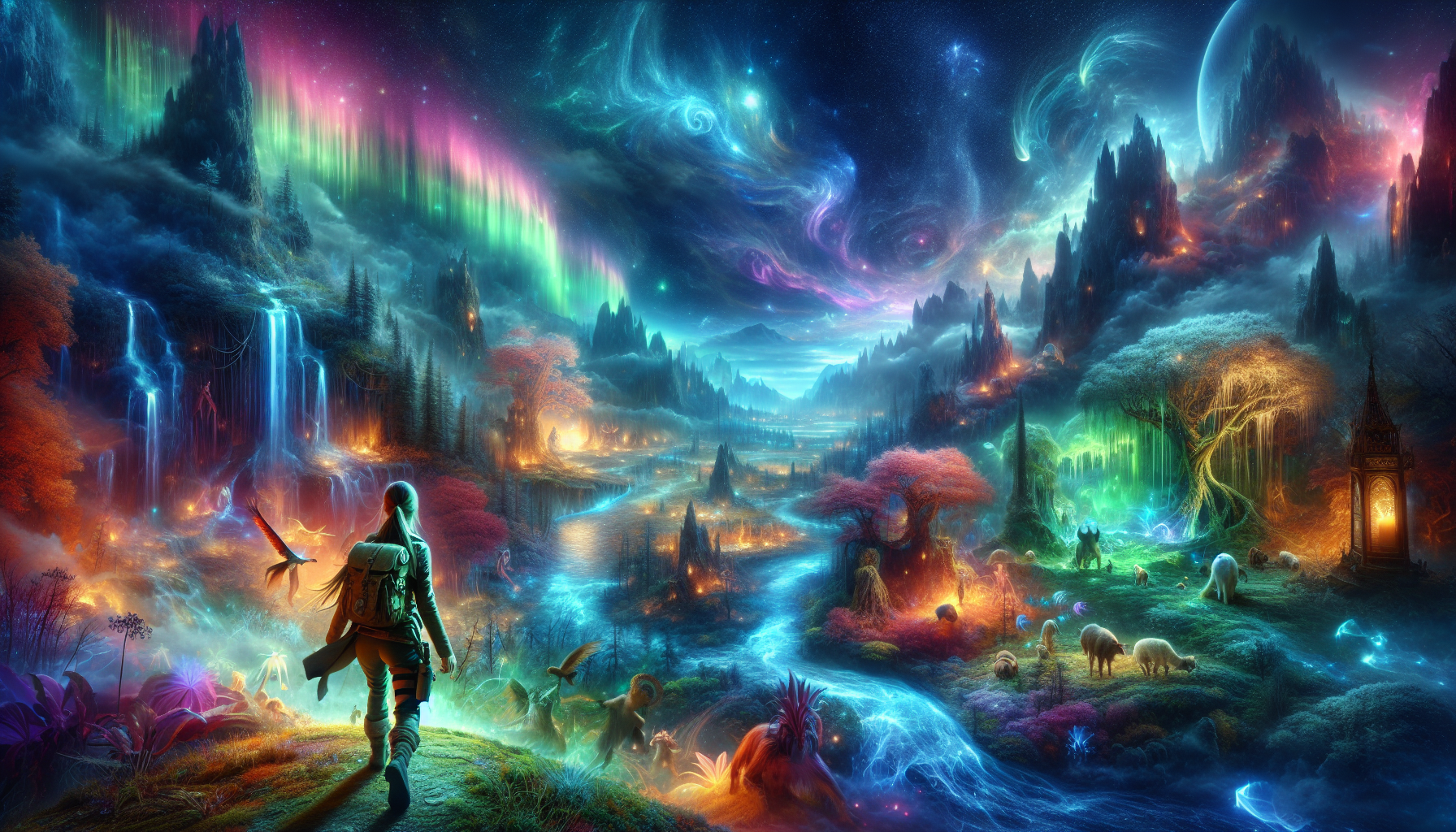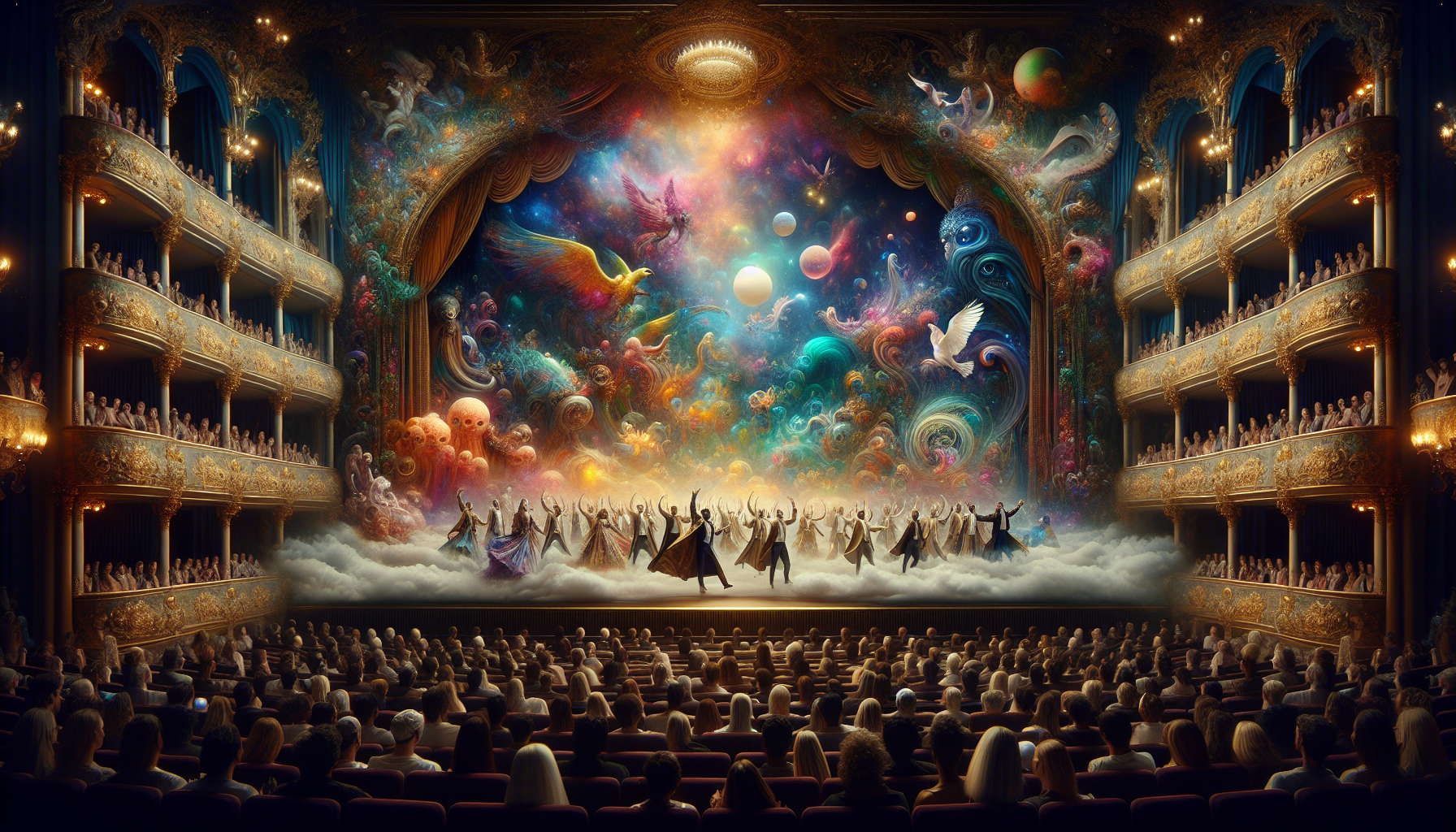In the hushed moments between wakefulness and sleep, a world exists where the impossible becomes possible, where fears are amplified, and where the mind spins narratives that both fascinate and terrify. Welcome to the “Nightmare Archive,” a digital compendium that delves into the darkest corners of our subconscious, unearthing the most chilling dreams ever recorded online. This blog post invites you on a journey through the shadowy landscapes of the human mind, exploring the haunting dreams that leave us breathless in the dead of night. 🌌
Dreams have long been a source of intrigue and mystery, serving as windows into the complexities of the human psyche. For centuries, cultures worldwide have sought to interpret and understand these nocturnal visions, considering them omens, messages from the divine, or reflections of our deepest desires and fears. In the digital age, the landscape of dream exploration has expanded exponentially, with countless individuals sharing their most vivid and terrifying dreams online. These personal accounts, raw and unfiltered, form the backbone of the Nightmare Archive, offering a unique glimpse into the universal and timeless nature of human fear. But what makes a dream truly terrifying? Is it the grotesque imagery, the sense of impending doom, or perhaps the eerie familiarity of the setting? 🌙
As we navigate through this archive, we will uncover the common themes and symbols that populate our nightmares. From being chased by unseen forces to finding oneself inexplicably naked in a public place, these recurring motifs reveal the collective anxieties that unite us as human beings. We’ll delve into the psychological theories that attempt to explain why we dream and, more specifically, why we have nightmares. Are they simply the brain’s method of processing stress and trauma, or do they serve a deeper, more symbolic purpose? This article will explore various interpretations, drawing on the insights of renowned psychologists and dream analysts. 🧠
Moreover, the Nightmare Archive will take you on a cultural journey, examining how different societies perceive and react to nightmares. In some cultures, nightmares are seen as spiritual battles with dark entities, while in others, they are viewed as a natural part of life that one must simply endure. We will explore how these cultural differences influence the way individuals experience and interpret their dreams, shedding light on the profound impact of cultural context on the subconscious mind. Additionally, we will discuss how technology has transformed the way we share and engage with dreams, creating virtual communities where people can connect over shared experiences of fear and wonder.
Finally, this exploration would not be complete without considering the potential for nightmares to inspire and ignite creativity. From horror films and literature to art and music, the terrifying dreams chronicled in the Nightmare Archive have the power to fuel the imagination, challenging creators to push the boundaries of fear and fascination. We will highlight some of the most notable works inspired by nightmares, showcasing the unique ability of these dark visions to transcend the realm of sleep and leave a lasting impact on our waking world. As you read on, prepare to enter a realm where the line between reality and dream blurs, where the fears we hide in the daylight hours come alive in the darkness, and where the Nightmare Archive awaits to unveil its secrets.
Understanding the Origins of Nightmares
Nightmares have long been a subject of fascination and intrigue. These intense dreams, often filled with fear, anxiety, and distress, have been recorded and studied across cultures and eras. The concept of nightmares can be traced back to ancient civilizations, where they were often attributed to supernatural forces or interpreted as omens. In modern times, psychological and physiological explanations have been developed to understand why these vivid dreams occur.
From a psychological standpoint, nightmares are often seen as manifestations of our subconscious fears and anxieties. Stressful experiences, trauma, and unresolved emotional conflicts can all contribute to the frequency and intensity of nightmares. Sigmund Freud, a pioneer in psychoanalysis, suggested that dreams, including nightmares, are expressions of repressed desires and emotions. On the other hand, Carl Jung proposed that nightmares could be a way for the unconscious mind to communicate with the conscious mind, bringing awareness to issues that need to be addressed.
Physiologically, nightmares are often associated with the rapid eye movement (REM) stage of sleep. During this phase, the brain is highly active, and dreams are more vivid and memorable. Disruptions in sleep patterns, such as sleep apnea or insomnia, can increase the likelihood of nightmares. Additionally, certain medications, alcohol, and drug use have also been linked to an increase in nightmare occurrences. Understanding these origins can help in addressing and potentially alleviating the distress caused by nightmares.
The Most Terrifying Dreams: An Exploration
Throughout history, there have been countless accounts of terrifying dreams that have left a lasting impact on individuals and cultures. These nightmares often feature common themes, such as being chased, falling, or experiencing a sense of paralysis. However, some nightmares stand out due to their unique and profoundly disturbing nature. Let’s delve into some of the most terrifying dreams ever recorded online, exploring the details that make them so haunting.
One of the most infamous nightmares is the recurring dream of being chased by an unknown entity. In these dreams, the dreamer often feels an overwhelming sense of fear and helplessness as they try to escape their pursuer. The identity of the chaser is typically obscured, adding to the anxiety and dread. Psychologists suggest that this type of dream may symbolize avoidance or a feeling of being overwhelmed by responsibilities or emotions in waking life.
Another common yet terrifying nightmare is the sensation of falling. In these dreams, individuals often experience a feeling of weightlessness followed by a sudden jolt or impact upon waking. This dream is thought to reflect a lack of control or insecurity, with the fall symbolizing a failure or fear of failure in real life. Although these dreams are unsettling, they are quite common and are usually not indicative of any serious psychological issues.
Analyzing Nightmare Themes and Patterns
To better understand the nature of nightmares, it’s essential to analyze the themes and patterns that frequently appear. By examining these recurring elements, we can gain insight into the common fears and anxieties that plague the human psyche. The following table compares some of the most prevalent nightmare themes:
| Nightmare Theme | Description | Psychological Interpretation |
|---|---|---|
| Chased | Being pursued by an unknown entity or person | Avoidance, fear of confrontation |
| Falling | Experiencing a sensation of falling | Insecurity, lack of control |
| Paralysis | Feeling unable to move or speak | Fear of helplessness, anxiety |
These themes reveal that nightmares often reflect universal human concerns, such as vulnerability, fear of the unknown, and the struggle for control. By recognizing these patterns, individuals can better understand their nightmares and work towards resolving the underlying issues.
The Role of Technology in Documenting Nightmares
With the advent of technology, documenting and sharing nightmares has become more accessible than ever. Online forums and social media platforms provide a space for individuals to share their experiences and seek support from others who may have had similar dreams. This digital age has led to the creation of a collective nightmare archive, where the most terrifying dreams can be recorded and analyzed.
Platforms like Reddit and YouTube are popular destinations for users to share their nightmare experiences. Subreddits dedicated to dream interpretation and analysis allow individuals to post detailed accounts of their dreams and receive feedback from the community. Similarly, YouTube channels specializing in dream analysis often feature videos where viewers can submit their nightmares for discussion and interpretation. This digital exchange of experiences fosters a sense of community and understanding among those who struggle with recurring nightmares.
Furthermore, technology has enabled researchers to study nightmares on a larger scale. By collecting and analyzing data from online platforms, psychologists and sleep researchers can identify trends and patterns in nightmares, leading to a deeper understanding of their causes and effects. This information can be used to develop more effective treatments and interventions for those who suffer from frequent and distressing nightmares.
For a deeper dive into how technology is shaping our understanding of dreams, watch this insightful video by the channel Dream Science: How Technology is Changing Our Dreams.
Overcoming Nightmares: Strategies and Solutions
While nightmares can be unsettling and disruptive, there are strategies and solutions available to help individuals manage and overcome them. Understanding the underlying causes and triggers of nightmares is a crucial step in addressing them effectively. Here are some approaches that can help reduce the frequency and intensity of nightmares:
- Stress Management: Since stress is a common trigger for nightmares, incorporating stress-reduction techniques into daily routines can be beneficial. Practices such as meditation, yoga, and deep-breathing exercises can help calm the mind and promote relaxation, reducing the likelihood of nightmares.
- Sleep Hygiene: Establishing healthy sleep habits is essential for minimizing nightmares. This includes maintaining a consistent sleep schedule, creating a relaxing bedtime routine, and ensuring a comfortable sleep environment. Avoiding stimulants like caffeine and electronic devices before bed can also improve sleep quality.
- Therapeutic Interventions: For individuals who experience frequent or severe nightmares, seeking professional help may be necessary. Cognitive-behavioral therapy (CBT) and other therapeutic approaches can help individuals address the underlying psychological issues contributing to their nightmares.
By implementing these strategies, individuals can take proactive steps towards reducing the impact of nightmares on their lives. It’s important to remember that while nightmares are a natural part of the dreaming process, they can be managed with the right tools and support.

Conclusion
Crafting a conclusion that effectively wraps up the discussion on “Nightmare Archive: Unveiling the Most Terrifying Dreams Ever Recorded Online” requires not only a recap of the key points but also a thoughtful reflection on the significance of the subject. In this exploration, we ventured into the enigmatic and often unsettling world of nightmares, delving into the digital records that offer glimpses into the darkest corners of the human psyche. By examining these chilling nocturnal narratives, we gained insights into the universal and timeless nature of fear, the cultural and psychological underpinnings of nightmares, and the ways in which technology has transformed our understanding and sharing of dream experiences.
Throughout the article, we uncovered how nightmares, despite their terrifying nature, serve as a vital mechanism for processing emotions and experiences. By analyzing these dreams, both from historical and contemporary perspectives, we recognized the recurring themes that transcend cultural and temporal boundaries, such as the fear of the unknown, existential dread, and personal insecurities. The article highlighted how these narratives not only reflect individual anxieties but also resonate with collective fears that permeate societies at large.
The rise of digital platforms has revolutionized the way we document and share our dreams, enabling people from all walks of life to contribute to a global repository of nocturnal experiences. This democratization of dream sharing has opened up new avenues for psychological and anthropological research, offering a rich tapestry of data for experts to analyze and interpret. We explored several online platforms where users freely share their most haunting nightmares, creating communities bound by shared fears and experiences. These platforms not only provide comfort and validation but also facilitate a deeper understanding of the human condition.
In examining these terrifying dreams, we also touched upon the psychological theories that attempt to explain the purpose and origin of nightmares. Whether viewed through the lens of Freudian psychoanalysis or contemporary cognitive theories, nightmares remain a complex and multifaceted phenomenon. The article underscored the importance of continued research in this area, as understanding the mechanisms behind nightmares can contribute to better therapeutic interventions and mental health outcomes.
The significance of this topic extends beyond academic curiosity. In a world where mental health is increasingly recognized as a crucial component of overall well-being, understanding the impact of nightmares can lead to more empathetic and effective support systems for those who suffer from them. By shedding light on the universal nature of these nocturnal terrors, we can foster a more compassionate dialogue around mental health and encourage individuals to seek help when needed.
As we conclude this exploration of the “Nightmare Archive,” it is imperative to acknowledge the courage of those who share their most intimate fears online. Their willingness to open up about their experiences not only contributes to our collective understanding but also helps to destigmatize the conversation around nightmares and mental health. This shared vulnerability creates a sense of community and solidarity, reminding us that, despite our differences, we all grapple with fears that manifest in the form of nightmares.
We invite you, dear reader, to reflect on your own experiences with nightmares and consider how they have shaped your understanding of fear and anxiety. Perhaps you have a nightmare of your own to share, or insights gleaned from reading others’ accounts. Engaging with this topic, whether through personal reflection, discussion, or research, can enrich your understanding of yourself and others.
In closing, we encourage you to comment below with your thoughts and experiences, fostering a dialogue that can lead to greater empathy and understanding. Share this article with friends and family, sparking conversations that may unveil shared fears and common ground. Lastly, apply what you’ve learned here to support others who may be struggling with the impact of nightmares, offering a listening ear or suggesting resources for help.
Let us continue to explore the mysteries of our minds, embracing the insights they offer while supporting one another on this shared journey of discovery. 🌙🕯️
*Note: Please verify the links and ensure the referenced online platforms and sources remain active and relevant at the time of sharing this article.*
Toni Santos is a visual storyteller and dream archivist whose work explores the delicate boundary between memory and imagination. Through layered visuals and symbolic design, Toni captures the fleeting essence of dreams — those strange, beautiful, and sometimes haunting fragments that drift through sleep and linger in waking thought.
His creative journey is rooted in a deep fascination with the subconscious and the imagery it conjures. From half-remembered landscapes to recurring symbols and surreal encounters, each piece Toni brings to life becomes a portal into the inner archive — where time distorts, meanings shift, and personal mythology takes form.
With a background in handcrafted artistry and visual composition, Toni merges intuition with intention. His work doesn’t just depict dreams; it preserves them, translating ephemeral moments into tangible expressions that evoke emotion, curiosity, and quiet revelation. Each visual is both a record and an invitation to explore the rich terrain of inner life.
As the guiding voice behind Vizovex, Toni offers illustrated dream journals, symbolic studies, and visual essays that help others connect with the poetic structure of their own subconscious landscapes. His art becomes a mirror — not just of what we see at night, but of what we carry deep within.
His work is a tribute to:
The fragile beauty of forgotten dreams
The language of symbols in the subconscious mind
The inner worlds we visit but rarely name
Whether you’re a lucid dreamer, a seeker of hidden meanings, or someone fascinated by the mystery of sleep-born stories, Toni welcomes you to step into a space where dreams are not lost — they are archived, one vision, one sketch, one silent narrative at a time.





